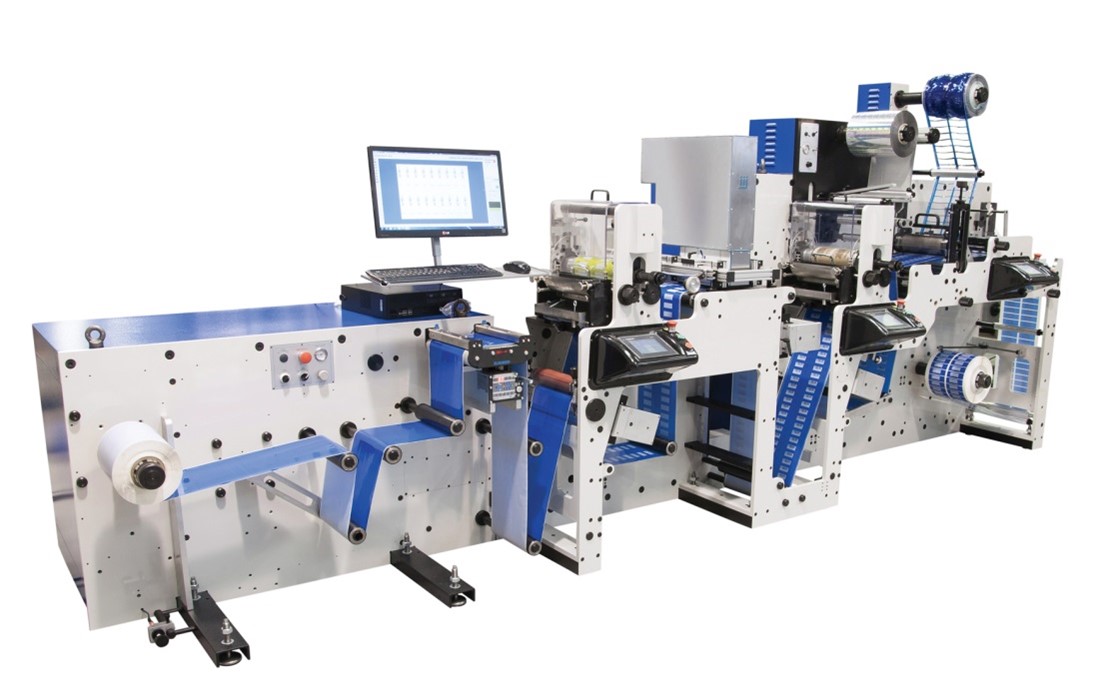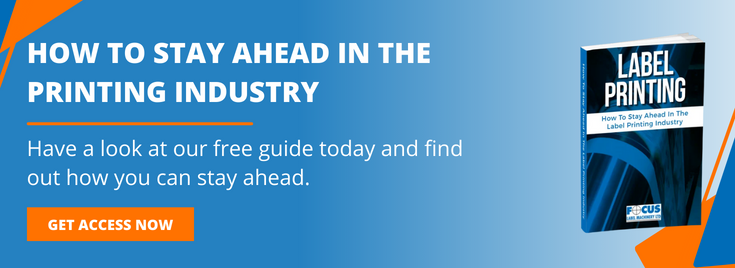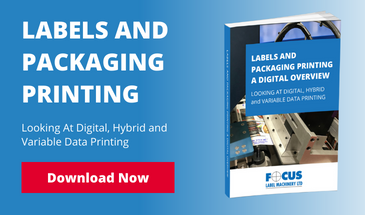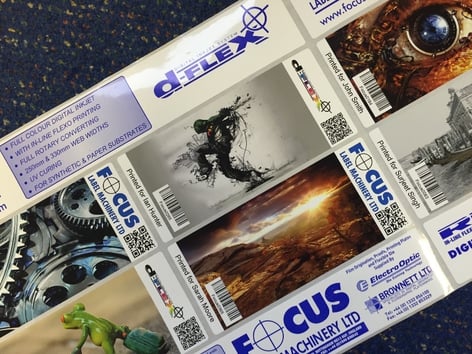 Variable data printing (VDP) (also known as variable information printing (VIP) or variable imaging (VI) is a form of digital printing, including on-demand printing, in which elements such as text, graphics and images may be changed from one printed piece to the next, without stopping or slowing down the printing process and using information from a database or external file.
Variable data printing (VDP) (also known as variable information printing (VIP) or variable imaging (VI) is a form of digital printing, including on-demand printing, in which elements such as text, graphics and images may be changed from one printed piece to the next, without stopping or slowing down the printing process and using information from a database or external file.
The most basic level involves changing the salutation or name on each copy much like mail merge. More complicated variable data printing uses 'versioning', where there may be differing amounts of customization for different markets, with text and images changing for groups of addresses based upon which segment of the market is being addressed.
This can take the form of personalisation which allows a company to connect to its customers. With clever software variable data printing can be more than a variable name or address in a printed piece; in the past, a variable name would have been effective, because it was a new concept at the time. In today’s world however, personalisation has to reflect what the customer values as important to themselves.
Digital print is ideally suited to working with variable data printing. This is often used in direct mailers and flyers or to tailor the print item to its’ recipient. We can vary text, as well as images, on each item to create the biggest impact and make each person feel special. Ultimately personalising print to each recipient.
The creative use of digital QR Codes allow interaction through augmented reality sites, web site pages and social media platforms to expand the sales experience, these applications has seen a dramatic increase in use through the Covid-19 pandemic of 2020-2021.
One of the most common areas of use of VDP is for Security & Tracking. The application scores highly, the use of unique barcoding on a product or package can by useful for stock control, retail, tracking & pricing.
One cannot argue against the fact digital printing is a valuable tool that has to be welcomed alongside traditional printing formats, and in many cases, it is an everyday part of the analogue printing process.
Almost everyone will have some experience of digital printing either at home or in the office through desktop printers, copiers & scanners. Digital technology has made considerable steps forward in the narrow web & labels industry over the past 20 Years. There are now numerous Digital technology platforms in the marketplace with investment from under £5K for an offline printer to an eye watering £1.5M GBP Hybrid Printing & Converting line. But are they all equal and which one is right for me?
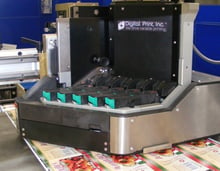
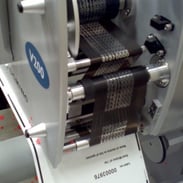
Ink Jet Thermal Transfer
Thermal Transfer: Thermal-transfer printing is a digital printing method in which material is applied to paper (or some other material) by melting a coating of ribbon so that it stays glued to the material on which the print is applied. Mono, colour & CMYK printing is possible. It contrasts with direct thermal printing, which is mono printing only, where no ribbon is present in the process. In this case the substrate itself reacts to Heat. In both cases speeds are low, print quality is crude but sufficient for bar coding and simple graphics. Both Thermal Transfer methods are treated as off-line print applications.
Digital Liquid Toner: when Benny Landa launched the Indigo digital press, few saw the impact this new company would have on the world of print. After turbulent initial years HP has taken control of the Indigo and arguably has the biggest share of Digital Press installations for the general commercial print business.
The system is an offset process where the image is initially printed with liquid toners to a soft rotary blanket which in turn is transferred directly to the substrate. Quality is excellent but materials require a special coating to optimize print quality. Monthly Service & Ink charges can vary according to usage, there is also a click charge per print, much like you would expect with an office copier. Xeikon have recently announced it is launching liquid toner in its range of equipment. In general, you expect speeds of around 20 mts /min from basic systems, therefor they tend to be standalone print engines with separate finishing lines.
Digital Dry Toner: We are all familiar with toner technology found in mono & colour copiers in the office. In wider web & roll formats ‘Xeikon’ is a leader in this technology where it has championed it micro toner. The system uses heat to fuse /fix the image to the substrate which means there are limitations for sensitive synthetic substrate applications. In general, you expect speeds of around 20 mts /min from basic systems. Typical set ups are a standalone print engine with separate processing for finishing.
Digital Memjet: The first Memjet systems were seen around 2010 and the
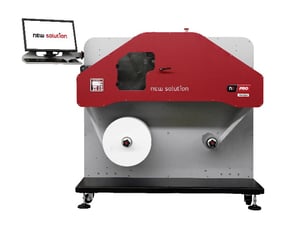
se engines can be found in a number of low-cost OEM systems. They fit somewhere between office & Industrial use. The technology is ink jet & uses a water-based dye rather than pigmented inks which is best suited to papers, it is not suitable for synthetic materials unless as they are specially coated. The system promises high resolution.
Memjet have been very creative with OEMs offering standalone systems or hybrid solutions. If you have an industrial application, we suggest you test for colour fastness in difficult environments. Although the initial system costs can be attractive the Ink & consumable print head costs are extremely high in comparison to other high end Ink Jet systems. They are a good entry level option.
Digital Ink Jet: Ink jet a very versatile digital print system finding itself used in virtually all industrial print applications from ceramics & tiling, flooring, direct product decoration, textiles, wood, security printing, packaging & labels. Systems can be multi pass like an XY plotter or single pass units and being compact can be integrated into product, web & roll fed machines.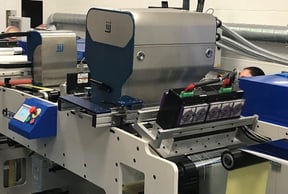
A Drop on demand print head has hundreds of microports, where measured droplets of Ink are fired onto the substrate as it passes under the head. Surfaces can be contoured or flat and the Ink quickly fixed by drying through evaporation or UV curing systems.
Ink jet systems can print on a wider range of substrates than other systems, some better quality than others. Print quality is dependent on the surface tension at the point the Ink hits the surface substrate, and we would recommend serious testing.
In recent years Digital Ink jet has taken over other methods in terms of print resolution (1000 /1800 dpi) & speeds now up to 50 to 120 mts /min for a single pass system. Compact Ink jet engines can also be easily integrated into existing machines for a combination of analogue, digital & finishing solutions.
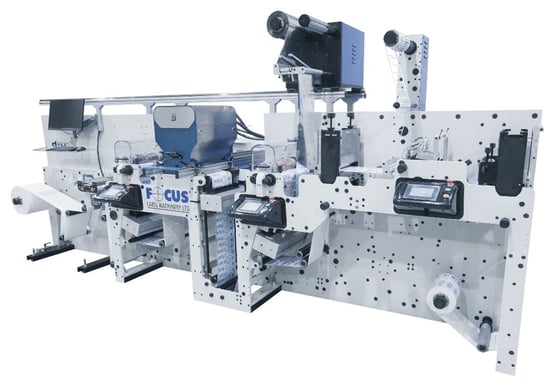
Digital Nanography: First launched in 2012 by ‘Landa’, and system promised delivery for 2013 we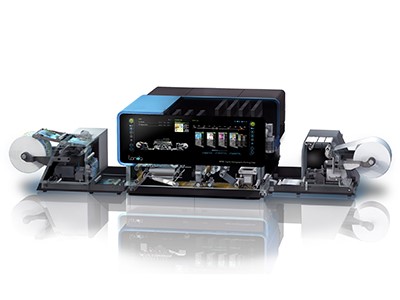 are still waiting to see the first beta installations in 2018. By Benny Landa’s own admission they are a little late. The system uses a revolutionary technique of digital printing to a flat offset blanket, the ink turns to a uniform thin film which according to the manufacturers can be transferred to ANY substrate, no special coatings required.
are still waiting to see the first beta installations in 2018. By Benny Landa’s own admission they are a little late. The system uses a revolutionary technique of digital printing to a flat offset blanket, the ink turns to a uniform thin film which according to the manufacturers can be transferred to ANY substrate, no special coatings required.
‘Landa’ look like they will now only focus on the wider web format for maximum returns. Equipment, Inks, & servicing costs, click charges have yet to be divulged, but will no doubt follow Mr Landa’s previous business models. Watch this space!
In summary these systems are not equal, each offer benefits & disadvantages so do your homework in deciding which best suits your market & applications. In most cases a single digital platform is not going to cover all your needs and you may have to invest in a number of different systems in order to compliment the range of applications you have.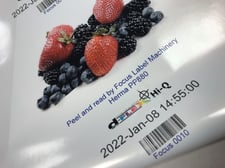
Substrates: The simple fact is that if you select any of the above digital systems they do not print on ALL substrates with equal quality. Some substrates will print perfectly on one digital system but not another. The number of printable substrates are limited by the technology itself. Some systems will require all substrates to be specially coated which will be more expensive that standard materials.
Some of the Digital systems can print on a small number of standard substrates straight from the supplier, but other substrates will require coating or pre-treatment (Corona). To optimize quality & keep costs down you may have to encourage your client to use an alternative substrate.
What questions should I ask a digital solution provider
On several levels digital printing it cannot be compared directly with conventional printing systems. In fact, each of the systems discussed have can have a defined appearance compared to analogue printing. This is no different to comparing the subtle differences in gravure, flexographic & lithographic printing. The digital option will have different rules relating to costs & price pressures and anyone expecting this new technology to replace their existing analogue equipment with a simple press of a button will be disappointed. Digital printing requires a lot of advance preparation in the presented files, the saying rubbish in, rubbish out is true in this case. In asking the right questions & preparing trials you can manage expectations and make the right choice for your market.
- Provide a number of test jobs which is typical of the type of work & application you intend to use the digital system.
- Test the same job on a selection of substrates for print quality comparison.
- Check ink usage & cost (bear in mind ink costs are much higher than analogue printing)
- Confirm if substrates are specially coated & confirm costs
- Hidden charges, Are there any click charges (some systems make a charge per print), or service charges.
- Are there any monthly service & maintenance charges?
- Do you need to purchase any additional software packages, computer hardware?
- The future, Is the system about to be superseded by a new model.
- Ask the right questions, listen carefully & read between the lines.
What should a Digital system provide?
- Instant Press proofs close to a clients approved print runs.
- Instant Costing for Ink & Substrates.
- Reduced Repro costs.
- Fast turnaround times.
- Production of small & medium press runs to meet each customer’s needs, helping them manage their inventory more effectively.
- Variable Data Print, sequential numbers, numerous barcodes and full colour product personalisation of each printed image.
- A variety of printable substrates.
- A cost effective print & finishing solution.
- Reliability
Today’s leading label printers are integrating digital into their flexo-based label printing businesses.
Whether it’s a digital UV inkjet printer mounted onto their flexo press for printing variable data, a stand-alone digital press that serves as operational relief to their flexo, or a flexo-digital hybrid label press, label printers are realizing the benefits that digital technology brings.
► Why is digital a complementary technology to flexo? Digital can add value to your end product without adding to the process or costs of production, indeed by combining flexo & digital you can take out additional processing costs.
► What are the drivers & trends for adding digital printing? Small runs, personalisation, variable data, reduced inventory, response & reduced lead times, initial proofing
► Who is adding digital printing to their business? Most businesses are considering digital in some form for their commercial applications, fortunately there are various entry price points to consider for equipment solutions.
► When is the best time to add digital printing? Anytime now is a good time to start, with the ever-changing technology landscape, waiting for tomorrows latest advance never comes.
► How can I make and save money by adding digital printing? You can reduce reprographics & plate costs by switching to digital, combine processes to remove an operation. Some companies offer a print service to other printers, becoming a Trade print hub for local companies.
► Where can I go to learn more? Start on the internet, visit trade shows, and carry out trials with systems manufacturers and talk to suppliers.
HOW MANY COLOURS: Typical systems offer Mono or a minimum of 4 process colours. A combination of these process colours can produce a wide range of colours & effects. But the colour gamut range is limited and to some degree colours are transparent thus affected by the substrate colour. In order to achieve specific pantone colours outside the normal gamut some manufactures provide 7 or 8 colours to increase the colour range and allow adjustment according to substrate colour, other manufacturers offer a separate white head to provide a substrate block or base to apply CMYK. A hybrid system Digital /Flexo can provide a 100% colour gamut
COLOUR MANAGEMENT SOFTWARE: Taking your image file and turning it into a high quality print the most vital part of your new print engine. Most systems come with a standard colour management software package, these can be very basic or difficult to navigate, at worse not provide the best results on your system. More intuitive add on packages focused on labels may prove worth consideration. Suites of modules packages can be tailored to your application but can be expensive and often require an annual fee for a user licence. The advantage is you will always have the latest user friendly version, and the latest advances in digital print processing to optimise output & production.
WORKFLOW SOFTWARE: Software to plan workflow & production has been available for many years but has progressed to include digital & combined hybrid processes. Managing job workflow to optimise production schedules is key to getting the best out of your conventional & digital print production. The ability to group jobs according to printing method, material choice, colours, tooling will improve efficiency, productivity & profit margins. New jobs can optimised at the start of reprographics stage, screening for a particular press or system, eliminating the need to make unregulated changes in the print shop & in turn reducing duplication & waste.
Off-Line Finishing: Separate finishing equipment has been available for the past 20 years, using servo technology in semi & full rotary equipment to provide good register between pre-printed substrates & the desired cutting lines. Flexible Cutting Dies are the tool of choice to minimise cost and are easy to change forms with the minimum of disruption. Optional finishing systems like embossing, hot foil, cold foil, over varnishing & spot varnishing are readily available.
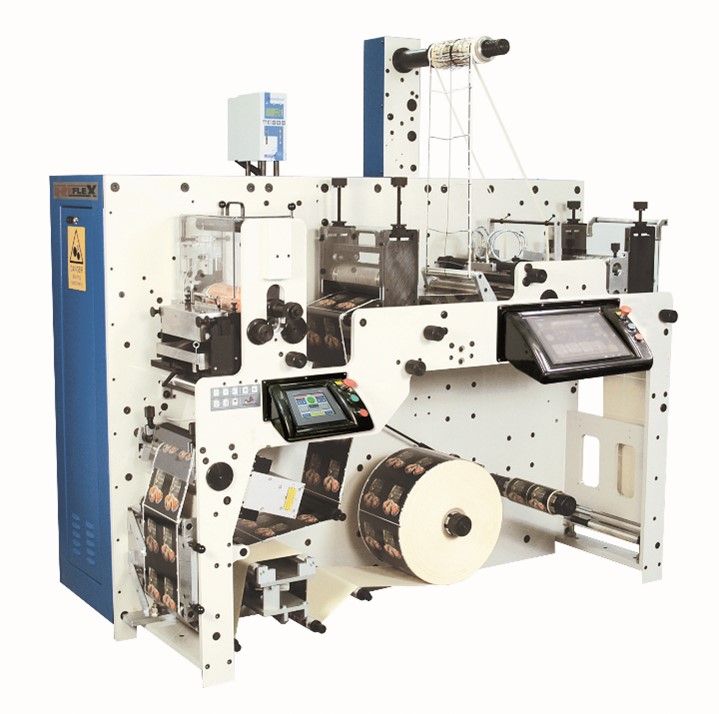
Hybrid Combination Technology
With relative slow production speeds digital printing & finishing have been regarded as separate processes. With current speeds of some digital technologies approaching speeds of analogue flexo, offset & letterpress machinery it is becoming practical to combine digital printing with traditional print shop equipment to take advantage of ‘ in line’ finishing, cold foil, hot foil & silk screen services in order to enhance and value add to the product label. Hence the term ‘hybrid digital solution’. A hybrid solution can bridge the gap between flexo and digital for a print shop. It can improve the colour gamut limitations of digital. Thanks to its flexibility and ongoing ability to interchange print technologies you can produce labels in either flexo or digital print, or a combination of both technologies, this is the significant long-term advantage of a hybrid press.
In Line Combination Printing : with print speeds of up to 120Mts per minute of single pass digital systems like UV Ink jet it has become perfectly practical to combine analogue & digital system into a single press. A perfect example is adding variable information such as bar codes & sequential numbering onto generic labels or security labelling applications. Another application might be personalisation of generic labels for an advertising or promotional campaign. Additional opportunities to add value such as like embossing, hot foil, cold foil, over varnishing & spot varnishing are readily available with in-line hybrid systems.
Is a Hybrid solution right for me: This will depend on the structure of your production workflow and the quantity of short run jobs that will benefit from combining printing processes and finishing lines. Some will point out that investing in a hybrid press will be higher, which actually may not be the case, furthermore a Hybrid system provides the option to switch from one technology to another to improve your return on investment.
Focus have long standing experience integrating Digital print systems into its existing servo based machine lines, from mono to full colour systems . The current dFlex systems are found in applications for security bar coding, variable data, personalised labels & general short run printing applications. the advantage & ability to switch to normal production is a real advantage to maximise production capacity. We recognise that maximised use of the equipment needs to be realised to reach an acceptable return on investment for all levels of business.
